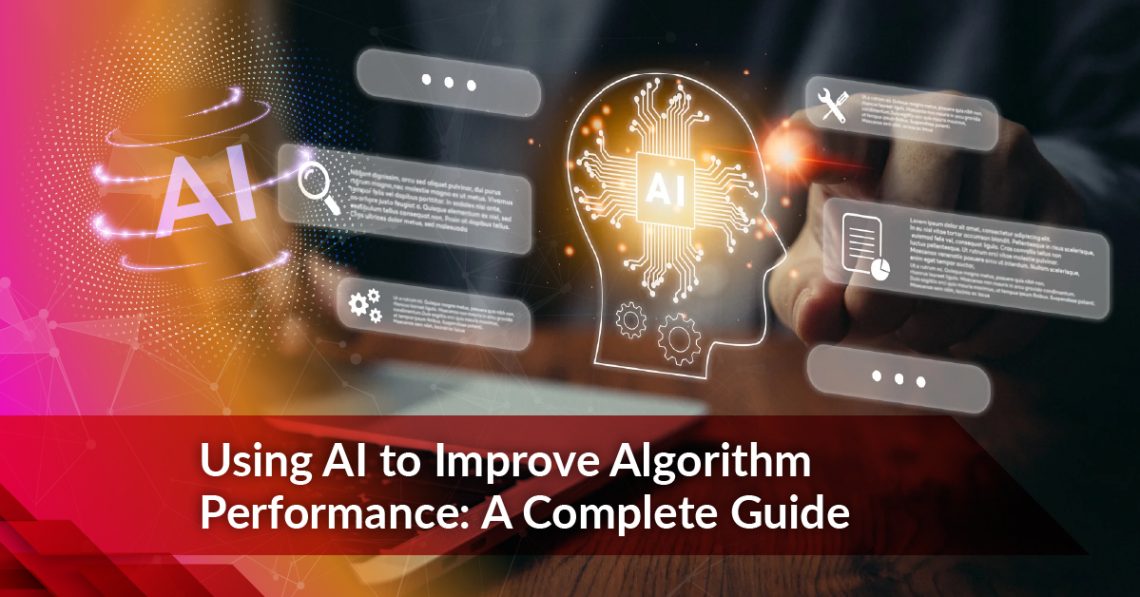In the realm of technology and data science, algorithms form the backbone of decision-making, automation, and innovation. However, developing and refining algorithms to achieve optimal performance can be a complex and iterative process. Artificial Intelligence (AI) has emerged as a powerful tool to streamline this process, offering new methodologies to improve algorithm efficiency and effectiveness. This article explores how AI can be leveraged to enhance algorithms, focusing on optimization, adaptive learning, and innovative approaches.
1. Automated Hyperparameter Tuning
One of the most significant ways AI enhances algorithms is through automated hyperparameter tuning. Hyperparameters are settings or configurations external to the model that influence its performance. Finding the optimal hyperparameters can be challenging, as it involves exploring a vast search space of possible values.
AI techniques such as Bayesian optimization and genetic algorithms can automate this process. Bayesian optimization builds a probabilistic model of the function mapping hyperparameters to performance and uses this model to explore the search space efficiently. Genetic algorithms, on the other hand, use principles of natural selection to iteratively improve hyperparameter configurations. By automating hyperparameter tuning, AI can significantly improve algorithm performance with reduced manual effort.
2. Adaptive Learning and Self-Improvement
AI-powered algorithms have the capability to adapt and improve over time through continuous learning. Machine learning (ML) models, for instance, learn from data and update their parameters based on new information. This capability allows algorithms to dynamically adjust to changes in the data environment, leading to improved accuracy and relevance.
Reinforcement learning (RL) is a subset of ML where algorithms learn to make decisions by receiving rewards or penalties based on their actions. RL algorithms are particularly useful for scenarios where the environment is complex and dynamic. By continuously interacting with the environment and adjusting strategies, RL algorithms can optimize performance in real-time.
3. Algorithmic Design and Innovation
AI can also contribute to the innovation of new algorithms. Generative models, such as Generative Adversarial Networks (GANs), can create novel algorithms or improve existing ones by generating new data or solutions based on learned patterns. For example, GANs can be used to design new network architectures or enhance optimization techniques by generating diverse and innovative solutions.
Neural architecture search (NAS) is another AI-driven approach that automates the design of neural network architectures. NAS algorithms explore various network configurations and select the most promising ones based on performance metrics. This approach has led to the development of highly efficient and effective neural networks that outperform manually designed counterparts.
4. Anomaly Detection and Error Reduction
AI techniques are adept at detecting anomalies and errors in algorithmic processes. Anomaly detection algorithms can identify unusual patterns or outliers in data, which may indicate issues with the algorithm’s performance or data quality. By flagging these anomalies, AI helps in diagnosing and addressing potential problems early.
For instance, autoencoders and one-class SVMs are commonly used for anomaly detection. These models can learn normal patterns in data and flag deviations as anomalies, which helps in maintaining the robustness and reliability of algorithms.
5. Efficiency and Scalability
AI enhances the efficiency and scalability of algorithms through parallel processing and distributed computing. Many AI models are designed to leverage parallel computing resources, allowing them to process large datasets and complex computations more quickly and efficiently.
Distributed machine learning frameworks, such as Apache Spark and TensorFlow, enable the training of AI models across multiple nodes or machines. This approach not only speeds up the training process but also scales the algorithms to handle larger datasets and more complex tasks.
6. Personalization and Customization
AI can tailor algorithms to specific user needs and preferences, enhancing their effectiveness. Recommendation systems, powered by AI, analyze user behavior and preferences to provide personalized content and suggestions. This personalization approach extends to various domains, including e-commerce, streaming services, and social media.
For instance, collaborative filtering algorithms use AI to recommend products or content based on user interactions and similarities. By personalizing recommendations, these algorithms improve user satisfaction and engagement.
Conclusion
The integration of AI into algorithm development represents a significant advancement in optimizing performance and driving innovation. From automated hyperparameter tuning and adaptive learning to innovative algorithm design and efficiency improvements, AI offers a suite of tools and techniques to enhance algorithmic capabilities. By harnessing the power of AI, businesses and researchers can unlock new potentials, streamline processes, and achieve superior results in their algorithmic endeavors. As AI technology continues to evolve, its role in algorithm enhancement will only grow, paving the way for more sophisticated and effective solutions.





